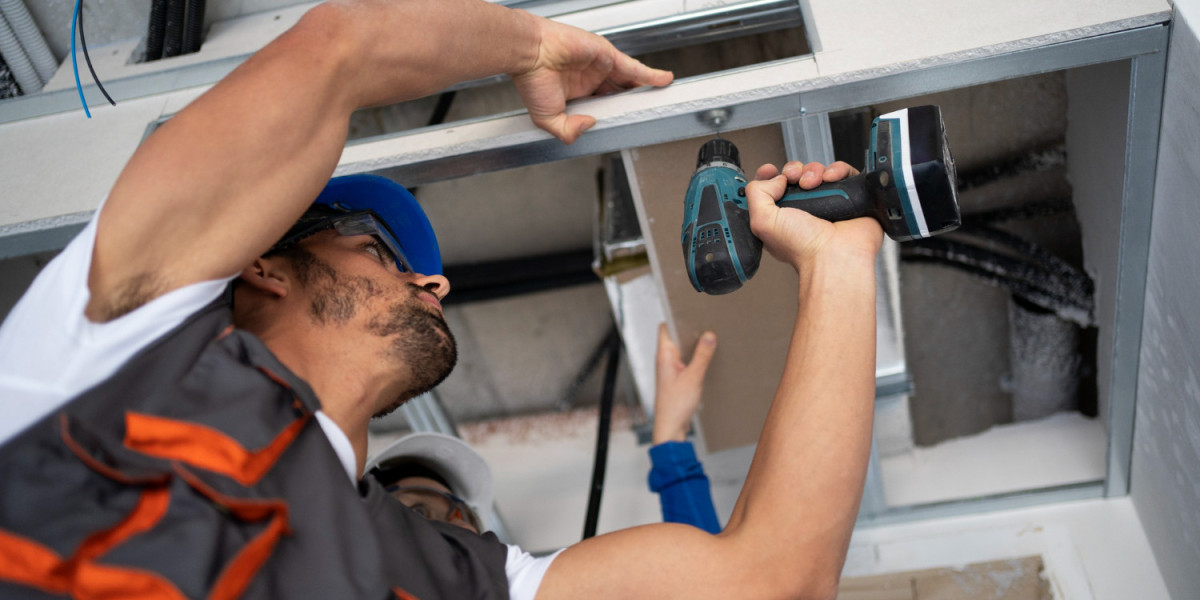In the age of technology, our homes are becoming smarter and more interconnected than ever before. From smart thermostats to intelligent lighting systems, the concept of a smart home is no longer a futuristic dream but a present reality. The proliferation of devices that can talk to each other and be controlled remotely has transformed the way we interact with our living spaces. At the heart of this smart home evolution is a robust and reliable home network installation. A well-structured home network setup is crucial for ensuring seamless communication between devices and enhancing the overall functionality of your smart home. Without this backbone, the convenience and efficiency promised by smart homes can quickly turn into frustration and inefficiency.
The Importance of a Home Network Installation
A home network installation serves as the backbone of your smart home ecosystem. It connects all your smart devices, allowing them to communicate with each other and the internet. This connectivity is essential for the synchronized operation of devices, such as having your lights turn off automatically when you leave the house or your thermostat adjusting based on your daily routine. Without a strong network, your devices may experience connectivity issues, leading to a less efficient smart home experience. Devices might lag, commands could go unexecuted, and overall, the integration of technology into your daily life could feel more cumbersome than convenient. A well-installed home network ensures that your devices perform optimally, providing you with the convenience and efficiency that smart homes installation promise. This setup not only enhances current functionalities but also prepares your home for future technological advancements, making it a worthwhile investment.
Key Components of a Home Network Setup
When setting up a home network, several components play vital roles in ensuring robust connectivity:
Router: The central hub of your home network, a router connects your home to the internet and distributes the connection to all devices. It acts as a gatekeeper, managing data traffic and ensuring that each device gets the necessary bandwidth.
Modem: This device connects your home network to your internet service provider (ISP) and is essential for accessing the internet. Modems translate the ISP's signals into data that your home devices can understand, acting as a bridge between your home and the wider internet.
Switches and Hubs: These devices extend your network, allowing more devices to connect to the internet simultaneously. Switches are particularly useful in larger homes or for setups with numerous wired connections, as they efficiently manage data traffic.
Cabling: Ethernet cables are crucial for reliable, high-speed connections, especially for devices that require stable connectivity. While Wi-Fi is convenient, wired connections often provide faster, more stable internet access, which is crucial for high-demand devices like streaming boxes or gaming consoles.
Wireless Access Points (WAPs): These devices extend wireless coverage throughout your home, ensuring that all areas have strong Wi-Fi signals. They are particularly beneficial in multi-story homes or spaces with many walls that can obstruct wireless signals.
Benefits of Professional Home Network Installation
While it might be tempting to set up your home network on your own, there are several benefits to hiring a professional for the installation:
Expertise and Experience: Professionals have the knowledge and experience to design and install a network tailored to your specific needs. They can assess your home's layout, the number of devices, and potential interference to create an optimal setup that maximizes coverage and speed.
Optimized Performance: A professional installation ensures that your network is optimized for the best performance, reducing lag and connectivity issues. They can fine-tune settings and configurations that most homeowners might overlook, ensuring that your network operates at peak efficiency.
Future-Proofing: Professionals can design your network with scalability in mind, allowing for future upgrades as technology evolves. This means your network will be able to accommodate new devices and standards, saving you the hassle of frequent overhauls.
Troubleshooting and Support: In addition to installation, professionals can offer ongoing support and troubleshooting assistance. This can be invaluable when you encounter issues that require expert knowledge to resolve swiftly.
Enhancing Smart Home Functionality with a Reliable Network
A reliable home network setup is the key to unlocking the full potential of your smart home devices. Here's how a robust network can enhance smart home functionality:
Seamless Device Integration
Smart homes consist of various devices, including smart speakers, cameras, thermostats, and more. These devices need to communicate with each other to function correctly. For instance, a smart doorbell might need to send a video feed to your phone, while a smart lock may need to receive a signal to unlock the door. A reliable network ensures seamless integration, allowing devices to work in harmony and provide a cohesive smart home experience. This integration not only enhances functionality but also creates a more intuitive and user-friendly environment, where devices anticipate your needs and work together to meet them.
Improved Automation and Control
With a well-installed network, you can easily automate and control different aspects of your home. For instance, you can schedule your lights to turn on at sunset or have your thermostat adjust the temperature based on your daily routine. A strong network ensures that these automations are executed flawlessly. This enables you to focus on more important tasks, knowing that your home environment is being managed efficiently in the background. Additionally, improved control means you can make adjustments on-the-fly, whether you're at home or away, providing greater flexibility and convenience.
Enhanced Security Features
A robust network installation includes setting up security protocols to protect your smart home from cyber threats. This includes configuring firewalls, setting up secure passwords, and ensuring regular software updates. Enhanced security measures safeguard your devices and personal data, providing peace of mind. In an era where cyber threats are increasingly sophisticated, having a secure network is paramount to protecting your privacy and preventing unauthorized access to your smart home systems. By prioritizing security, you ensure that your home remains a safe haven, protected against potential vulnerabilities.
Steps to a Successful Home Network Installation
Setting up a home network might seem daunting, but breaking it down into manageable steps can make the process smoother:
Step 1: Assess Your Needs
Before starting the installation, assess your needs and consider the number and type of devices you plan to connect. This will help determine the required bandwidth and coverage area. Understanding your needs also involves considering future expansions, such as additional devices or increased internet usage, to ensure the network can accommodate these changes without major overhauls.
Step 2: Choose the Right Equipment
Select the appropriate equipment, such as routers, modems, and access points, based on your needs. Look for devices that support the latest standards like Wi-Fi 6 for better performance. Investing in high-quality equipment can have a long-term impact on the reliability and speed of your network, ensuring that you get the most out of your smart home setup.
Step 3: Plan Your Network Layout
Plan the layout of your network to ensure optimal coverage throughout your home. Consider the placement of routers and access points to minimize dead zones. Strategic placement not only enhances connectivity but can also reduce interference from other electronic devices, improving overall performance and reliability.
Step 4: Installation and Configuration
Once you have your equipment, proceed with the installation and configuration. Follow the manufacturer's instructions and configure settings such as SSID, passwords, and security protocols. Taking the time to properly configure your network ensures that it operates efficiently and securely, providing a solid foundation for your smart home.
Step 5: Test and Optimize
After installation, test your network to ensure all devices are connected and functioning correctly. Optimize the network by adjusting settings as needed to improve performance. This might involve tweaking device priorities or adjusting the placement of access points to eliminate weak spots, ensuring that the network supports all your smart home functionalities seamlessly.
Common Challenges and Troubleshooting Tips
Even with a well-planned installation, you might encounter some challenges. Here are common issues and troubleshooting tips:
Weak Signal Strength
If you experience weak signals in certain areas, consider adding more access points or upgrading to a mesh network system for better coverage. Mesh networks are particularly effective in large homes or those with architectural features that interfere with signal distribution, as they create a seamless, unified network throughout the entire space.
Slow Internet Speeds
Slow speeds can result from network congestion. Limit the number of connected devices and prioritize bandwidth for critical devices. Additionally, ensuring your router's firmware is updated and configuring Quality of Service (QoS) settings can help manage bandwidth distribution more effectively, improving overall speed.
Device Connectivity Issues
Ensure devices are within range of the Wi-Fi signal and that network settings are correctly configured. Restarting the router can also resolve connectivity issues. Regularly checking for firmware updates and maintaining up-to-date security settings can prevent many common connectivity problems and enhance device performance.
Conclusion
A well-planned home network installation is vital for maximizing the functionality of your smart home. By ensuring seamless communication between devices, improving automation, and enhancing security, a robust network setup unlocks the full potential of your smart home ecosystem. Whether you choose to set up your network yourself or hire a professional, following the right steps and addressing common challenges will ensure a smooth and efficient smart home experience. As technology continues to advance, having a reliable network not only supports current smart home technologies but also paves the way for future innovations.
Embrace the future of living with a smart home powered by a reliable network, and enjoy the convenience, efficiency, and innovation it brings to your everyday life. By investing in a strong home network, you are not just enhancing your home's technological capabilities but also enriching your lifestyle, making everyday tasks simpler and more enjoyable.









